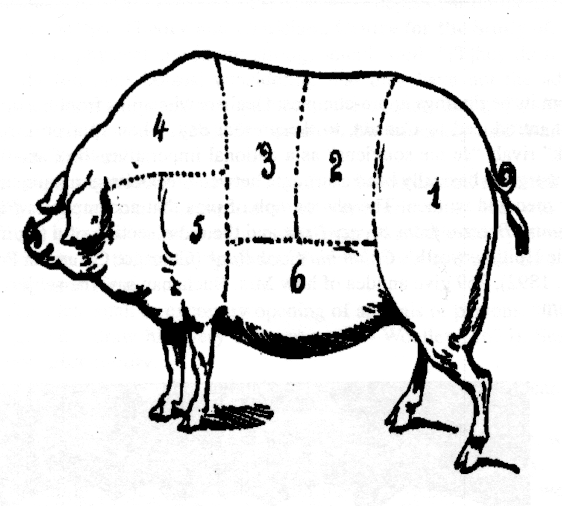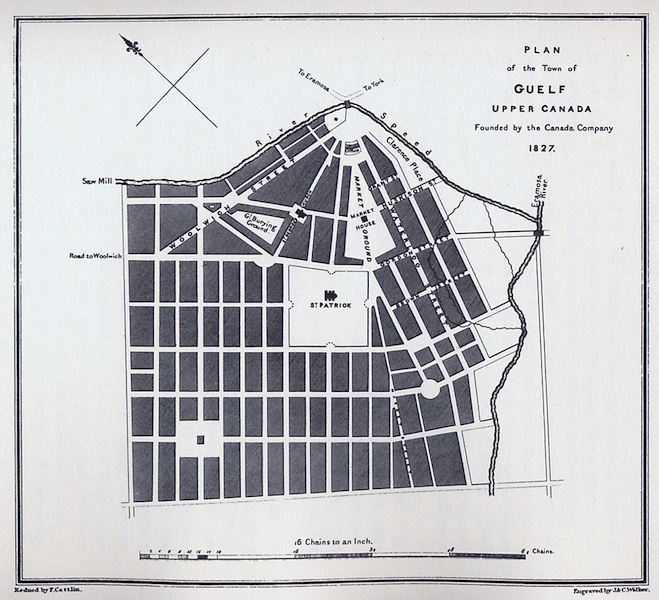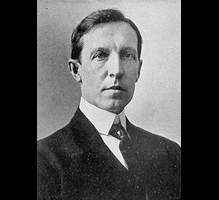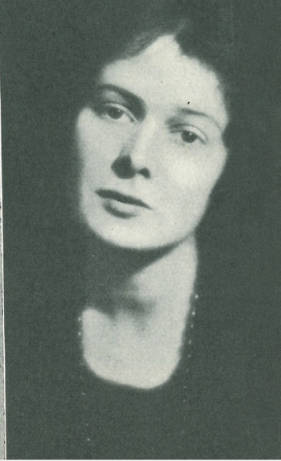LEGENDS OF THE SAINT LAWRENCE
Retold by Katherine Hale
Pictured by Chas W. Simpson, R.C.A
Issued by the Canadian Pacific Railway
INTRODUCTION
Legends and stories of long ago that still haunt the shores of that “sacred stream,” the river St Lawrence, which was the first highway into the unknown continent of North America. To early explorers, who had come to find the kingdom of Cathay, it imaged a great dream. A panorama of mystery and beauty unfolded before them¾bright water, dark islands, purple hills and shining cliffs. The music of the great blue river lured them on, and as time progressed French forts gradually arose on the heights, and in the sheltered coves and valleys white villages began to cluster about the parish churches.
Today the explorers of the St. Lawrence are tourists coming and going from European and Canadian ports. And they are haunted by the peaceful beauty of these villages that are nameless to them. They are lured by the distant flash of red roofs, fascinated by pigmy barns set in little homesteads that glide by like minute pictures in some quaint old fairy book. One can almost hear the church bells ringing from steeple to neighbouring steeple, so close together do country parishes lie.
What is the life hidden away in these lovely unknown spots?
It is, for the most part, a simple habitant existence, in which small farming, fishing, trade and commerce flourish. But country fêtes, songs and stories also have definite place in the history of a people who have not forfeited any of their traditions.
Fêtes, such as Noël and Fête-Dieu, as well as many which celebrate the birth or death of a Saint, are set apart and [page 2] observed with pious zeal, but also in a spirit of holiday. As for French-Canadian songs¾there seems to be one for every occasion. Many are familiar chansons of Normandy and Provence which have become Canadianized through the generations into what has been called “a verbal and musical idiome.” Stories of all kinds abound. Some are founded on fact, such as the countless exploits of Dalbec, a famous hunter: and they furnish an example of French invention, set to the stirring theme of a provincial hero.
But the legendary lore of this, or any country, is a thing apart. In the lore of French Canada, religious environment. Indian superstition and French belief are curiously blended. One wanders in a sort of spiritual fairyland, in which the powers of earth and air, demon, angel, saint, fairy and mortal are all called into play. It is needless to say that even on the shores of the “sacred river” these folk-tales and legends are not now reverenced as they were even a generation ago, but they are still enjoyed and still cherished.
In ancient days the local raconteur was an important figure, and happily, even yet, in some of these enchanted villages his place had not been taken by the businesslike lady with a piercing voice who tells Bed-Time Stories over the radio. Still on winter evening, or after vesper are over in the summer, a crowd of neighbours surrounds the person who can relate vividly familiar and well loved tales. Often a narrative will take several evenings to finish. But the beginning sometimes opens prologue-like, when the speaker, lighting his pipe, and gathering his audience with his eye, commences after the old fashion:
Cric, crac, girls and boys!
Parlons, parlee, parlow!
The whole thing if you want to know,
(Pass the spittoon to Fiddle Joe!)
Sac-a-tabi, sac-a-tabac,
All who are deaf will please to draw back [page 3]
Contents:
[page 4]
[page 5; includes illustration]
[page 6; includes illustration]
I. —The Dripping Indian
One of the most compelling and mysterious of all the stories of the voyageurs of French Canada relates to a solitary figure that has come to be known as “The Dripping Indian.”
Some two hundred years ago a party of rivermen were camping at Les Ecorres on the Rivière des Prairies, near Montreal. It happened that the spot they had chosen was near the foot of a rapid called Le Sault-au-Recollet (The Rapiad of the Missionary). It was a night as black as a raven’s wing, so that the men saw clearly a light on a point nearby, “Travellers!” they thought, and went to investigate.
Nearing the point they found no canoe and no travellers only the appearance of a dark-skinned man seated on the ground by the fire, his elbows on his knees and his head in his hands as if drying himself. To the calls of the voyageurs he did not respond, nor did he move. And when they came up they saw that his hair and his limbs were dripping with water. They spoke to him, but not an eyelash flickered. Then they saw that the water falling from his brown skin did not touch the sand, nor the flame from the fire give forth heat. They threw bark of a Silver Birch in the fire and it remained [page 7] intact. They withdrew it from the magic flame to show their comrades the proof of the tale, and turned and left the motionless Indian crouched over his fire.
A voyageur, to whom later they told their story, laughed at them. Instantly there was a mysterious whirring sound of Chasse Galerie, which silenced him. And several times thereafter this apparition was seen on one side or other of the waterfall.
History tells us that in 1645 Père Nicolas Viel was drowned by force as he was making his way down from the country of the Hurons with three of that tribe, one a rough customer who hated religion; and that the devil caught the traitorous Huron here at the very moment that he was drying himself, after having drowned the missionary, so that he and his fire were changed by witchery into this illusion. [page 8]
II. —Chasse Gallerie
A peculiar form of black magic is Chasse Galerie, purely an invention of the devil, and only to be worked by those who fail to go to Confession and are bold enough to make an attempt to put le bon Dieu en cache¾in other words, lock him up.
By means of an incantation, while a bottle of rum is poured down a hole in the Church floor, preferably on All Souls Day, the magic is accomplished, and after that one may work Chasse Galerie at will. The every-day canoe becomes a fantastic and fearful boat. It travels like the wind high in the air, and as long as its occupants wear no scapulars or medals, do not utter a sacred name, and take care not to touch the church steeples as they pass, they can travel thousands of miles in the twinkling of an eye.
A noted scalawag of a voyageur, one Titange, was working some two hundred miles above Trois Rivières and wished to emply the dark art to convey him back to a Christmas dance. He asked Freddie Joe to come also. “All aboard. Quick… We are all ready? Then let everyone repeat after me: [page 9]
[page 10; includes illustration]
Satan, our master fair,
Heave us up in the air...
Wing, wang, wong!
Wong, wang, wing!
Drive us along
On the night's dark wing!"
But no—no. For all their incantations the canoe would not stir. The night’s dark wing was motionless. Titange—little angel!—was so furious that he chopped the canoe to pieces; but as he attacked the bow, something whirled the axe out of his hand, and threw it so that it cut the sinews of his wrist clean through.
Years afterward Titange was seen on the steps of the same chapel where he had tried to put le bon Dieu en cache, a poor ailing beggar holding out a maimed arm. An it was all because Fiddle Joe had taken care to pin, with secrecy, a little picture of the Holy Infant right on the bow of the craft. Against its might even Chasse Galerie is powerless. [page 11]
[page 12; includes illustration]
III.
The Phantom Priest
Often at midnight a light had been seen in the little Church at Isle Dupas, near Montreal, which shone even brighter than that of the lamp of the sanctuary, so that it became a perplexing mystery to the inhabitants—who were too superstitious to try to solve it.
But at last several brave parishioners went together very later to look in the window of the Church. They saw at the foot of the altar a priest in full canonicals, motionless, as if he were rivetted to the spot. Alarmed at what they had seen, they departed more quickly than they had come, for the priest bore no resemblance either to their own Father or to any other who had ever visited the parish.
But one, Jacques Valois, a bolder and at the same time a more devout man than the others, said that he would enter the Church and judge for himself whether they had seen before the altar was a human or a supernatural being. [page 13]
One evening, then, he quietly opened the Church door, crossed himself, kneeled down, said his prayers and waited for events. At twelve o’clock he saw a priest in his soutane issue from the Sacristie, light two tapers at each end of the altar and go through the usual preparations for celebrating Mass. He then retired through the same door by which he had come.
The faithful Valois did not falter in his prayers, but knelt on in the cold and silent Church. As the beads fell one by one he almost forgot the curious reason for his coming. Then, as if in answer to his devotion, shortly the raiment, and bearing the chalice. He ascended the altar steps. Convinced that Mass was to be performed Valois prepared to repeat the responses. The Sacrament was then celebrated according to the usual rites.
Afterwards the worshipper quietly followed the officiating priest to the Sacristie, when his Reverence, having bowed to the Cross, turned to Valois and said: “For years I have come here every night to say over a Mass that in my life I said too hastily. I was condemned to do so every night until I should find here a person waiting for me to serve the Mass. My penance is ended. I leave you with my benediction.” And the phantom vanished. [page 14]
IV.
Loup-Garou
One of the most familiar of French-Canadian legends is that of the Loup-Garou, probably an adaptation from the German werewolf, but none the less typical of the early French-Canadian reverence for things spiritual and belief in supernatural intervention. Loup-Garou overtakes only a faithless soul. One who fails for seven years to partake of the Easter Sacrament, for instance, may be compelled to roam about every night in the shape and skin of a wolf, or other animal, and, as in the story of Parsifal, only a bloody wound can save him.
There are many versions of the legend, but one relating to Joachim Crête, a miller of Beauséjour, is often told. Joachim Crête was not a bad man, for he observed Lent and Fridays. Still, he jeered at Church collections and did not control his irreligious hired man, Hubert Sauvageau, because he was a good partner at checkers.
One Christmas Eve, when the bells were ringing for the midnight mass, the two men were as usual drinking and playing together. Neighbours passing the house stopped and begged them to come to Church on this holy night. [page 15]
[page 16; includes illustration]
Instead they deliberately went on playing, and further to show their defiance even set the mill rolling as though it were a Monday morning.
When Joachim heard the last toll of the Church bell there was just one moment that he thought regretfully of the Mass—and then the game went on. The bell was silent…Crack…The mill stopped dead, as silent as the bell. They laughed and went to start it up again, but that was an impossibility, for you would think that a hand had stopped.
“Devil take the whole concern!” shouted Joachim Crête, “let us go!”
It was then that the lantern went out, and Hubert fell headlong down the mill stairs, and his master left him and went alone to drink, and presently heard a deep moaning and turned and saw a huge dog as tall as a man sit up on his haunches and stare at him with savage eyes. He called to Hubert, but there was no answer. As the terrible dog was about to fall on the trembling man, the Church bell, pealing for the Elevation, was heard.
“Loup-Garou!” cried Joachim. “Forgive me, mon Dieu!”
As he fell on his knees a reaping hook on the wall caught against his clothes. He seized it and hit the brute…Everything disappeared in the dark.
When he came to life again there was Hubert throwing water on his face.
“What is the drop of blood on your ear?”
“Nothing, master. I fell two days ago in the mill.”
“Miserable!” he cried. “It was you!”
And the poor miller, who has persistently disregarded the call of the midnight bell, lay back on his pillow, never again to recover his senses. [page 17]
[page 18; includes illustration]
V.
The Little Goblins
It is difficult to describe the little goblins, for, as the country people used to say, they are not exactly demons and most certainly not angels. Imagine a tiny people, some eighteen inches high, each with one eye burning like a coal in the middle of the forehead, a nose like a hazel nut, arms and legs like toads, and a stomach for all the world like a tomato, wearing great pointed hats which make them look like mushrooms in the spring. They sleep by day and the light in their eyes illumines the night. They love horses and are generally found near or under a good stable.
A lumberman, Zébe Roberge, with his companion Baptiste Lanouette, called Pain-d’epices, or Gingerbread, were working at Rivière au Chêne near Trois Rivières. The boss of the gang had sent horses with them and Zébe Roberge was put in charge. Belzémire was a delightful little gray mare and Zébe enjoyed his task of grooming her. But it was soon evident that the little goblins also appreciated her. In fact, they became very attentive. Every Monday morning when Zébe went to feed and curry her there was new hay in the manger, her mane and tail were neatly plaited and her coat shone. In fact Zébe used to say that there was nothing lacking but ear-rings and a brooch. All very well except that she was short of breath and quivering with excitement. This worried her groom, so he decided to [page 19] watch and see who it was that took her out of the stable for midnight rides. It was late on a Sunday night and the barn was very still. One can picture Zébe’s excitement, for there is always the bare possibility of seeing a female goblin, and if you catch one of those you can exchange her for a barrel of gold. Soon a little stir seemed to come from under Belzémire’s stall. A plank lifted softly, a peaked hat appeared, and what looked for all the world like a coal of fire in the darkness. The goblin’s eye!…Crac!…The plank suddenly lowered. There was a curious whiff of tobacco smoke. Zébe was thoroughly alarmed for it was his first sight of a goblin, so after making sure that the hat was too large to be feminine he did not linger long in the stable.
But the troubling of Belzémire continued. At New Year’s the goblins kept her all day. Gingerbread, who was hunting, swore that he had seen her with several of them on her back, far off, soaring over the trees. Every now and then he asked Zébe what was going on, to which the groom would reply, “Ciel! All Saint Maurice is bedevilled.”
In the spring, when the lumber gang broke up and the horses were taken back to Trois Rivières, the mystery was still unsolved. But during the summer Zébe happened to meet Gingerbread down on the wharves at Quebec, with his glowing pipe in his mouth and his wide-brimmed hat on his head. Suddenly, unaccountably, the hat reminded him of the one he had seen at midnight. In the lighted pipe there seemed to be an eye burning like a coal, and again he smelled that whiff of tobacco smoke. Then and there he accused his old comrade of trickery. But Gingerbread only laughed and replied, “Quelle coincidence!” Wishing to help you find her captors, I too spent a night in Belzémire’s stable and snatched this very hat from a goblin, hoping it belonged to a female. Alas, it is too large! A little more patience, Zébe, and you and I might have become rich men!” [page 20]
VI.
The Phantom Head
Two centuries ago the men at Point Lévis led a dangerous life in winter, when the crossing to Quebec was made in heavy canoes, or dug-outs with flat keels. The captain, in his red shirt, long-legged moccasins and fur cap, stood alert as he paddled. The passengers were huddled on the flat bottom and in bad weather every safe trip seemed a miracle. There were false openings, ice-jambs, crevices and, worst of all, the “chariot” of floating ice-blocks which would mass together and leave the St. Lawrence apparently clear, only to rush back and hurl itself against the ice-bridge that bars the way to the Gulf.
The legend of the Phantom Head concerns one Peter Soulard, and goes to show that courage is one thing and braggadocio another. Peter loved to take a chance. One clear mid-winter day, when the sky and the water were cobalt blue, and the “chariot” away up the river, everything seemed favourable. But a passenger wasted Peter’s time, and at last, when he was ready to start, the tide had turned. [page 21]
[page 22; includes illustration]
“Too late!” objected the crew.
“Am I a greenhorn?” asked the vain-glorious Peter. “All aboard! Embarque! Embarque! Nageons, nos gens!”
Twenty minutes later the swift chariot was opposite Quebec. The passengers were drowned in the ice-jamb, but Peter and one paddler escaped.
It was two years later that with all those lives on his conscience, he set out once more against the tide. This time, capsized in mid-stream, a knife-like wedge of ice, thing and keen, struck him a fair blow in the neck. The head bounded off and slid, slid, slid away, leaving a crimson trail behind it.
Still, in that most dangerous spot, “entre les deux églises,” between the two Churches of St. Joseph and Beauport, on foggy or snow-drifting weather, a sailor sometimes sees emerging from the pale darkness a slab of floating silver on which seems to move restlessly a dark, shapeless thing, hardly to be distinguished in the eerie light. It is Peter’s head¾the Phantom Head of one who thought he could outwit the ice. And they who see it must die within the year. [page 23]
[page 24; includes illustration]
VII.
La Corriveau
In 1850 there was exhibited in Quebec a rusty iron cage in the shape of a human form, with hollow arms extended. People remembered old and terrible stories of a way of execution, particularly with respect to one Marie Josephte Corriveau, a notorious prisoner. At the Four Roads of St. Joseph, near Point Lévis, hung the iron cage where passers-by might watch the torture of its victim. Now St. Joseph is just opposite of the Isle d’Orléans, which Jacques Cartier first saw veiled in the purple of wild grapes and called “The Isles of Bacchus.” Later it was named “Isle of Sorcerers,” because of strange lights, will-o’-the-wisps, that continually lured poor souls to death in the marshes.
The story of how La Corriveau, in her iron cage, used these lights with devilish power, and rose a human soul over the St. Lawrence to join them, is still related in the countryside about Quebec when old tales are going the rounds.
It seems that one José Dubé, a respected habitant, was leaving Pointe Lévis for the Village of Beaumont, against the will of his friends who feared to have him pass the iron cage. But he was a courageous and pious man, and the skeleton with her eyeless skull seemed quiet enough as he passed, though he [page 25] thought he heard a sort of subdued wailing. Therefore, he stopped and said a de profundis for her soul… But soon, tic-tac, came a queer sound behind him, like tiny iron footsteps. Again he prayed, unharnessed his horse and lay down in his wagon to sleep. It was past midnight. He looked over the water, and suddenly it seemed as if the Island were on fire. Lights streamed in movement and colour, and danced up and down the shore as if all the condemned souls in Canada were gathered there to hold a witches’ sabbath. As he watched, the dancing shapes of imps circled round, chanting weird incantations.
“No, No.” thought the valiant man. “I shall pay no attention to them, for I am not one who is in hate to quit good Lord’s earth and go and live with the goblins!”
Again, tic-tac, tic-tac, and then bony arms about his shoulders. The terror of these skeleton arms was surely a poor reward for his piety on her behalf, for he found that La Corriveau was climbing on his back, cage and all.
The truth is that José Dubé’s prayers for the victim of the iron cage were his undoing, for she too had seen the glamorous lights of the will-o’-the-wisps and wanted to go and dance with her friends on the enchanted isle. But she could not get across without the help of a Christian, for the St.Lawrence is a consecrated stream. Therefore, she made up her mind that he must take her. Again he resisted. She evoked the aid of the goblins and the echoes of pandemonium might have been heard as far as the Saguenay.
“So! If your body won’t carry me over,” quoth the amiable Corriveau, “I shall strangle you, and straddle yourself, and ride over to the festival.”
And she strangled him then and there. [page 26]
VIII.
A Legend of Sainte Anne
Legends and stories of the good Sainte Anne are to be found all through the Province of Quebec. In 1876, under the authority of the Pope, she was made the Patroness of Canada, but for long before that boatmen up and down the river had sung prayers to her and thankful hymns for delivery from danger, and habitants had knelt at many a wayside cross and chapel erected in her honour. To her chief shrine, at Ste. Anne de Beaupré, near Quebec, pilgrims flock from everywhere, but the least known and perhaps loveliest legend of this Saint has to do with her miraculous guidance of the Indian wife of Cadieux, famed in song and story. A Frenchman of education, a soldier of fortune who had fallen out of favour at Court, a poet and a musician, Cadieux carried his spirit of adventure and his gentle art into a wild new world that welcomed him with open arms. The Ottawa Indians, with whom he traded, so admired him that they gave to him in marriage a beautiful young squaw of their tribe, whom history says he dearly loved. [page 27]
[page 28; includes illustration]
While the two were packing their canoe with furs for Montreal, near Calumet Falls on the Ottawa River, a rumour came of an approaching attack by the Iroquois. Hastily loading the boat, Cadieux committed his wife, with two paddlers, to the raging torrent¾the lesser of the two evils. Straightway the swirling tide engulfed them, but the young Indian woman, only lately converted, began to pray with all her soul to Sainte Anne.
As if in special protection instantly a figure, shining, silvery and misty, appeared near the prow as if it were shaped by the spray. It shone before the path of the little canoe until shoals and eddies had vanished into the steady current of the St. Lawrence, so that in safety they reached Montreal. But Cadieux, left behind, invoked no saint. Bravely he faced the painted savages with his scanty band. They were outwitted, and alone the Frenchman fled into the forest where this tragic death of hunger and exhaustion and “the madness of the woods” is told in the famous Lament that was found written on birch bark and clasped to his breast when, too late, the rescue party discovered him. The first verse runs
Petit rocher de la haute montagne,
Je viens ici finir cette campagne,
Ah! doux échos, entendez mes soupirs,
En languissant, je vais bientôt mourir. [page 29]
[page 30; includes illustration]
IX.
The Legend of Rose Latulippe
A charming figure in the legendary lore of Quebec is that of Rose Latulippe, a high-spirited girl, who was rescued in the nick of time, on Shrove Tuesday Eve, from being waltzed into Hades, unawares, by Lucifer himself. It seems that the winter of 1740 was unusually severe and dances few and far between. All the more reason, thought Rose, why her father should give one on the Eve of Mardi Gras. Dressing for the affair, she looks out of her window and sees an unknown stranger arrive on a wonderful horse, with fire in its eye and flame in its movements. “Seranus,” in her ballad on the theme, depicts the conversation between Rose and the traditional old nurse:
"What a figure! What grace! What a noble steed!
Now who can it be? Now who indeed?"
"Ciel, I know not! Some stranger bold.
The town is full of such I'm told.
And Rose Latulippe, look you, do not forget
The last advice of your old Marmette:
Dance, dance, little Rose, dance all you like
Till the midnight hour from the clock shall strike,
But to dance after twelve, tonight, is a sin,
Whether with a stranger or kith or kin." [page 31]
The newcomer wore a black velvet suit under his raccoon coat, and a fur cap and gloves which he kept on, as he danced, time after time, with Rose, in spite of the anger of her lover, and of protests ever and anon from the nurse. Marmette, who is terrified by the awful glances that the stranger throws in her direction every time she crosses herself.
Gayer runs the music, wilder the dance. The clock begins to strike midnight. Rose remembers the warning and tries to disengage herself from her handsome partner, but finds it impossible. The fiddlers stop playing, but a diabolical music, which she alone hears, urges her on against her will. A devil’s dance indeed! Who knows what might have happened, had not the Curé entered at that moment, and making the sign of the cross in the air declared:
"The Church hath power
To save her child in such an hour."
He taketh the maiden by both her hands
Whilst Lucifer dark and discomfited stands.
Snorting and stamping in fiendish ire
He gains his steed with the eyes of fire,
Who gives a long and terrible neigh
And into the darkness thunders away. [page 32]
X.
The Witch of the St. Lawrence
Most dreaded of all enemies in the early life of Quebec were the ruthless Iroquois, and more frightful than any supernatural being the Indian Witch, Matshi Skueou, who had no settled abiding place but wandered up and down whenever the camp fires of the tribe were lighted. The lakes, the forests, the marshes, even the pale grasses of the prairies, knew her terrible form. In the region of the St. Lawrence: stories of her still linger. There are many and varied, but every legend agrees that her darkest sorcery was worked on or near the water. No one ever saw her by day, but in the dark her sea-green eyes were said to sparkle with a wan and beckoning light, and her black hair was crowned with purple river flags. Her copper-like skin, her violet lips with their terrible smile, were full of evil fascination. She would descend on a ray of the moon and appear on the waters of cascades, on the silent sands of the downs, among the vapours of the valleys or the sea tides, aiding and abetting her fearful friends the Iroquois. Her victims were attracted by soft movements that seemed to raise up dust of bluish sparks to dance about her like a fountain’s enchanted spray, and her voice was mysteriously beautiful. [page 33]
[page 34; includes illustration]
XI.
Rivière Ouelle Legend
Pointe-aux-Originaux, at Rivière Ouelle, is the scene of a quaint tradition connected with the porpoise, or white whale, fishery carried on here in early times. An ancient record states that “this unwieldy and eccentric fish in its wandering has lately been caught on these beaches, more than one hundred at a time.”
The story goes that a number of fishermen had acquired a monopoly to plant their stakes here and, the profits being large, kept the matter dark so far as the simple habitants were concerned. It happens that the height of the fishing occurs about the day of St. John Baptiste, the twenty-fourth of June, when the fête of the fires of St. John used to be celebrated in many places in French Canada. Then, to honour the Saint, and also the glorious season of the sun’s ascendancy, fires were lit, the priest blessing the fagots, and a festival was enacted which often ended in revels lasting far into the summer night.
On the holiday in question a number of habitants with their families had driven over to the fête at Rivière Ouelle and to see an extraordinary catch of porpoise which had taken place the day before. Libations of good old Jamaica rum, with modest sangaree for the ladies, were poured. The village fiddler [page 37] played the sweet, well known songs: A La Claire Fontaine, Par Derrière Chez Mon Père, Malbrouck s’en va-t-en Guerre, which all French-Canadians delight to sing. Then came a day, long-continued dance. It seemed as though the revellers would never tire; they danced until the moon dimmed, and the candles burned down and were just on the point of expiring.
It was then that the music of the fiddler wavered, almost like certain strange shadows that came creeping over the walls. Long stealthy hands seemed to advance and retreat to and from the dancers as they moved forward or back advance and retreat to and from the dancers as they moved forward or back. Ghostly arms appeared and the hands, now turned palms outward, extended in the fleshless invitation, as though they would father in these human beings and turn them, also, into shadows. They disappeared, then re-appeared on the walls of the opposite.
The fishermen as well as the habitants were terrified at such an ending to the feast. They rushed out into the darkness to where their boats were beached, but the Spirits pursued them. A rising tide had floated in the gruesome carcasses of the porpoises. They bestrode them. And immediately the eyes of the dead white porpoises became sparkling lights. Flashes of fire were emitted from the blow-holes of their heads, a phosphorescent illumination haze of light they disappeared and were lost in the distant sea.
The people from the St. Denis and Kamouraska hitched up their quat’ roues, and crowded into them those who had come by boat, for no one wanted to be on the water that night. They vowed that Pointe-aux-Originaux was an uncanny place. The spot was dreaded for years. [page 38]
XII.
The Bell of Death
The first stone building ever erected in America still stands on the shores of the St. Lawrence. It is the little Roman Catholic Church at Tadousac, from whose tiny steeple a mysterious bell of death once tolled for Père La Brosse, dearly beloved missionary of the Montagnais Indians and the last of the Jesuits of this settlement. The story of his passing, in 1782, is still related among the inhabitants as though it had recently occurred.
Tall and distinguished, vigorous in spite of his seventy years, Père La Brosse had been occupied with his duties all day, and as night fell went to the trading post and spent a happy evening with its officers. As he turned to leave he said to the little company. “My friends, I have had a spiritual revelation which tells me that my work on earth is finished, and it is appointed that I shall die tonight. The bell on the church will tell you the moment of my passing. Come to me if you will, but do not touch my body, for Messire Compain is to bury me. You will find him waiting at the Isle aux Coudres. Farewell, and benedicite.” [page 39]
[page 40; includes illustration]
The little group listened incredulous yet apprehensive. They resolved to sit up and await whatever should happen. Then at midnight, Boom! Boom! Slowly the bell tolled as if for a passing soul. They hurried to the Church and there, before the altar, lay the good priest, his hands clasped before his face as if he has been dazzled by a great light.
During the night a storm arose and at dawn the watchers faced a furious sea lying between them and the Isle aux Coudres sixty miles away. But as they put out a boat and prepared to fulfill the last wishes of their priest a lane of smooth water opened miraculously before them and they travelled in safety.
Messire Compain was awaiting them on the rocks, his breviary in his hands. He knew why they had come, for the bell of his Church had also struck the hour, and “a whisper in the air” had told him the news. So he went with them to Tadousac and performed his office, and they afterwards learned that the bell of every parish where the beloved missionary had served during his busy life had also tolled—untouched—that night. [page 41]
[page 43; includes illustration]
XIII.
The Ghost Ship
or
Le Rocher de Perce
It is in the beautiful region about Gaspé, where the mountains are not too high and red-sailed fishing boats are often seen, that suddenly uprises an enormous monolith called le Rocher de Percé. At one extremity opens a great natural arch-door, through which the blue sea shines in perspective. Close to it, just at the entrance to the river, near Cap des Rosiers, is a smaller rock mass in the form of a vessel in full sail. Little by little the constant waves have worn it away, but, in spite of the centuries, there remains something in the sinister, if fading, shape to recall the curse laid upon it by the ghost of a young French girl, nearly three hundred years ago.
Blanche de Beaumont, the fiancée of a young French officer, Chevalier Raymond de Nerac, stationed at Quebec in the early days, was on her way to join him in New France. The vessel in which she sailed was in sight of land when it was attacked by a pirate ship, its crew destroyed and the girl taken captive. To escape indignity, and the threat she should see Quebec, [page 43] where her lover awaited her, but never land, she threw herself into the sea. It is said that the sailors, and even their malicious captain, felt that disaster must follow her disappearance. The next day the vessel arrived near le Rocher de Percé. Officers and men were fascinated by its majestic contour, and the captain, as though moved by some secret power, ordered the boat to go up as close as possible.
As if awaiting them, there, on the edge of the rock, stood a familiar but now white-veiled figure, her hands above her head as though pronouncing a malediction. The vision was so poignant that a cry of fright arose from the sailors, and at the moment all those on board, and the vessel itself, were changed into a compact mass of rock.
It is the fabulous ghost ship, upon which even the sea-gulls whop love le Rocher de Percé, fail to rest in passing. [page 44]
XIV.
The Legend of Mamelons
Two heroic figures, John Norton a famous trapper of old days, and Atla, last descendant of the Iberian or Basque people, appear in the most ancient of all Canadian legends. We see them flying for their lives before walls of soaring flame on their way to Mamelons, the great sand mounds, believed to be the old geologic beaches of earliest time, that tower above the region we call Tadousac. There on the shifting golden sands we are told that Basque Fathers of the race that had dwelt immemorially amongst the mountains of Spain anchored ships “before the years of men;” and that, later, savage battles were fought out between tribes and peoples now forgotten.
It was at the period when great earthquakes appeared in this region, giving rise, for instance, to such a name as Les Eboulements, that a chief of the Lenni-Lenape Indians had married a Basque princess who died leaving a daughter, Atla, the last of the race. The doom following this inter-marriage which, it was prophesied, would bring ruin and extinction to the tribe, could [page 45] [page 46; includes illustration] only be averted by the birth of a child whose father was free of the “cross of red and white.”
It seemed as though this might come to pass, for Atla and her English lover were on their were on their way to the priest at Mamelons when their fate overtook them. No trapper sees the red hand of bush fire on the Laurentian Hills without remembering their rush through the woods as hot as hell. Like burning arrows they sped along the ridge that edges the monstrous rock, called in a later day “Cape Trinity.” And where the rock drops sheer they plunged into the black waters of the Saguenay, were rescued and taken to Tadousac. But just as the holy man met them, with ring and book, “a heavy shadow fell over the land,” and the earth took back the daughter of her old race.
It is said that on that high crest, whose sand first saw the sunrise of the world she sleeps beyond doom and fate, a symbol of old birthright in Canada. [page 47]
Leave a Reply
You must be logged in to post a comment.




















